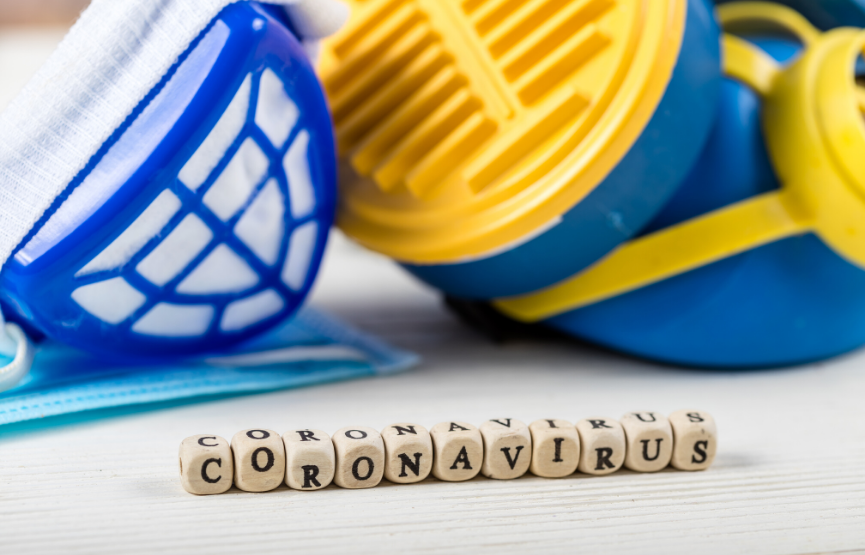All about Coronavirus

Coronavirus is not actually a new virus like everybody thinks. It was discovered in the 1930s when an intense respiratory disease of tamed chickens were OK so demonstrated to be brought about by an bronchitis infection (IBV). In the 1940s, two more animals coronaviruses, mouse hepatitis virus or else MHV and transmissible gastroenteritis virus which is also as TGEV. Those two animals were isolated. Then, in the 1960s coronaviruses were discoverd in humans. The earliest studies were from people with normal cold, which were later named as human coronavirus. But what is coronavirus? Coronavirus is a group of connected viruses that cause diseases in mammals and birds. This virus can appear as a common flu or a very severe respiratory sydrome (SARS). In 2019, a new coronavirus was identified as the cause of a disease outbreak in China that originated in China (Mayo Clinic, 2020). This new kind of virus is called COVID-19.
The symptoms of this disease are fever, dry cough, shortness of breath or difficulty in breathing. It mainly affects your respiratory system because the lungs are infected by the virus. Other serious symptoms can include tiredness, aches in the muscles, runny nose, sore throat ot diarrhea. Some people might the experience the lack of tasting and smelling. This disease might cause you even serious problems like pneumonia. There are also situations that people did not develop any symptoms and did not feel well. Most people recover from this virus and they do not need any special medical treatment. Older people are the ones that belong to fragile groups and those with underlying medical problems like high blood pressure, heart problems or diabetes, are more likely to develop serious illness, people with fever, cough and difficulty breathing should seek medical attension (World Health Organization, 2020).
However, how does COVID-19 spead? People can catch COVID-19 from others who have the virus. The disease can spread from person to person through small droplets from the nose or mouth which are spread when a person with COVID-19 coughs or exhales. These droplets land on objects and surfaces around the person. Other people then catch COVID-19 by touching these objects or surfaces, then touching their eyes, nose or mouth. People can also catch COVID-19 if they breathe in droplets from a person with COVID-19 who coughs out or exhales droplets. This is why it is important to stay more than 1 meter (3 feet) away from a person who is sick.
Some people are saying that it is just a flu and there is no need to worry or panic about but it can cause serious illness, about 1 in every 5 people who catch it need hospital care. It is therefore quite normal for people to worry about how the COVID-19 outbreak will affect them and their loved ones. We can channel our concerns into actions to protect ourselves, our loved ones and our communities.
Also, everone is worried if they should wear a mask or not. The mask is not needed, the mask is needed for those who are ill with COVID-19 symptoms, expecially coughing, or looking after who may have COVID-19. Dispocable face masks can only be used once. If you are not ill or looking after someone who is ill then you are wasting a mask. There is a world-wide shortage of masks, so WHO urges people to use masks wisely.
To sum up, there is no point to risk our lifes, no one knows how this virus is going to effect in our organisms. There might be severe symptoms or no symptoms at all. We need all to be careful and stay at home as much as possible because we are not risking only our lives but the lifes of our loved ones.
References
J.S.M. Peiris (2012). Coronaviruses. Available at: https://www.sciencedirect.com/topics/neuroscience/coronavirus (Last accessed: 16 April 2020)
Kahn, Jeffrey S. MD, PhD, Mclntosh, Kenneth (2005). History and Recent Advances in Coronavirus Discovery. Vol. 25, issue 11, pp. 5223-5227. Available at: https://journals.lww.com/pidj/fulltext/2005/11001/history_and_recent_advances_in_coronavirus.12.aspx (Last accessed: 16 April 2020).
Mayo Clinic (2020). Coronavirus disease 2019 (COVID-19). Available at: https://www.mayoclinic.org/diseases-conditions/coronavirus/symptoms-causes/syc-20479963 (Last accessed: 16 April 2020)
World Health Organisation (2020). Q&A on coronaviruses (COVID-19). Available at: https://www.who.int/news-room/q-a-detail/q-a-coronaviruses#:~:text=symptoms . (Last accessed: 16 April 2020)
